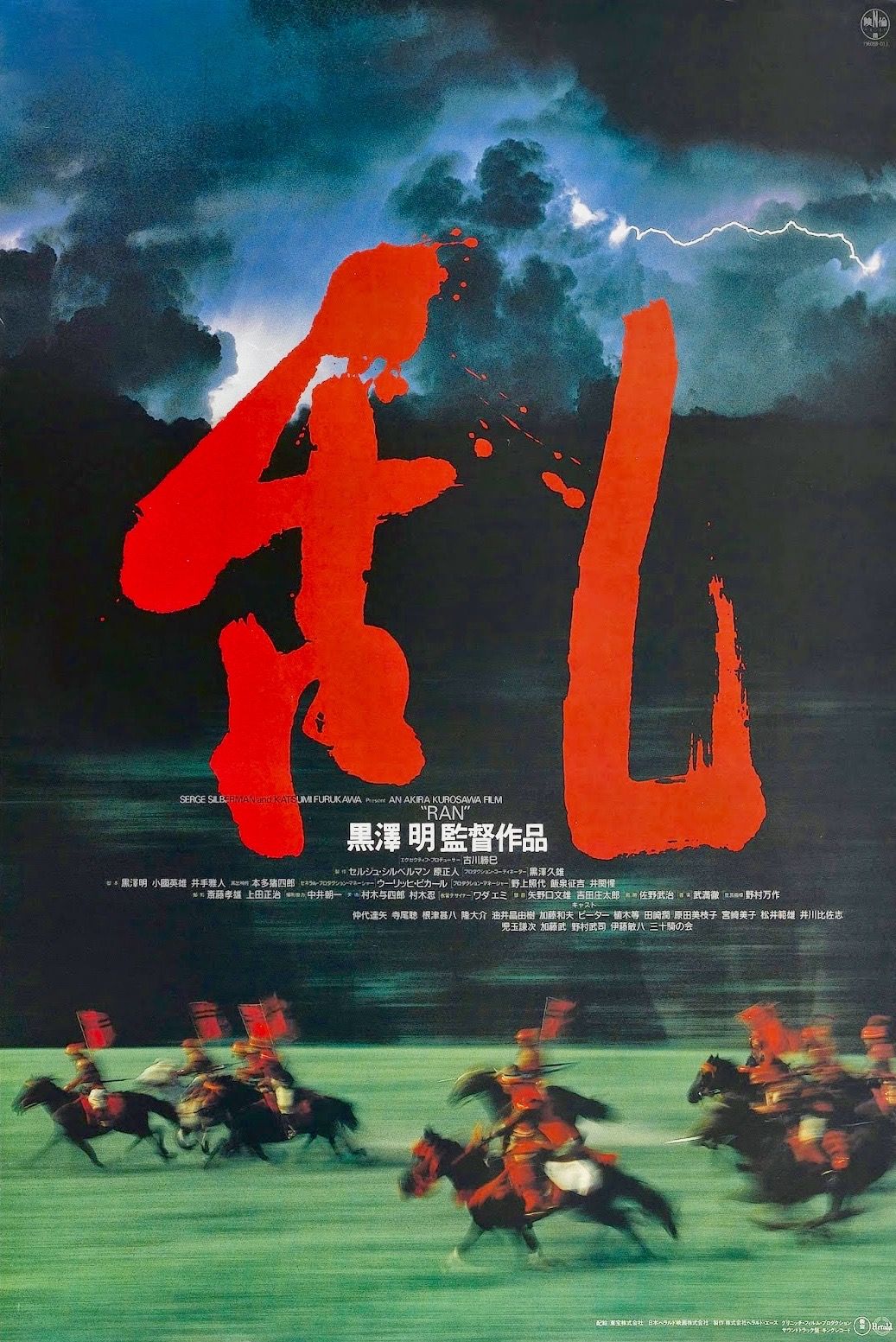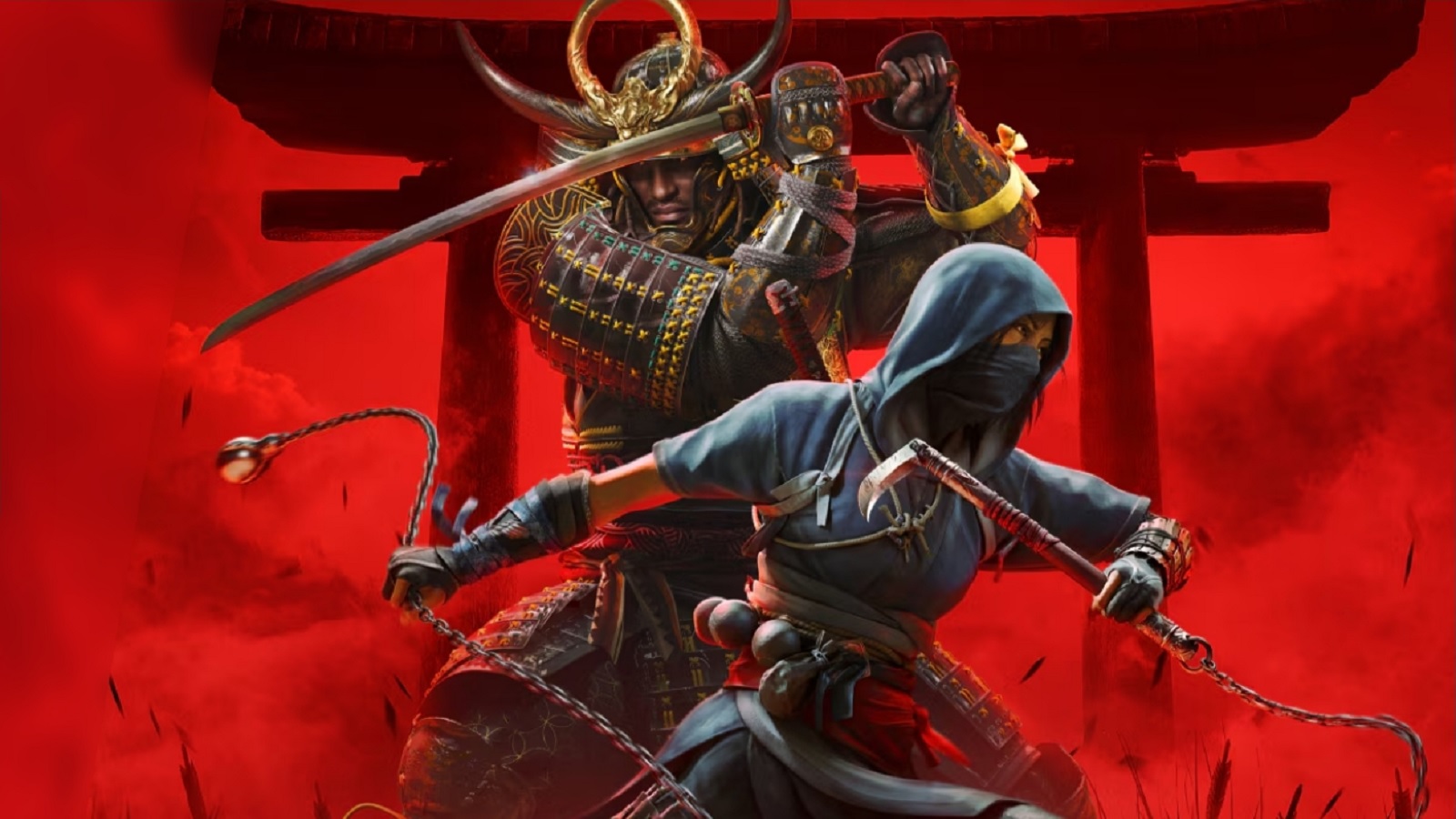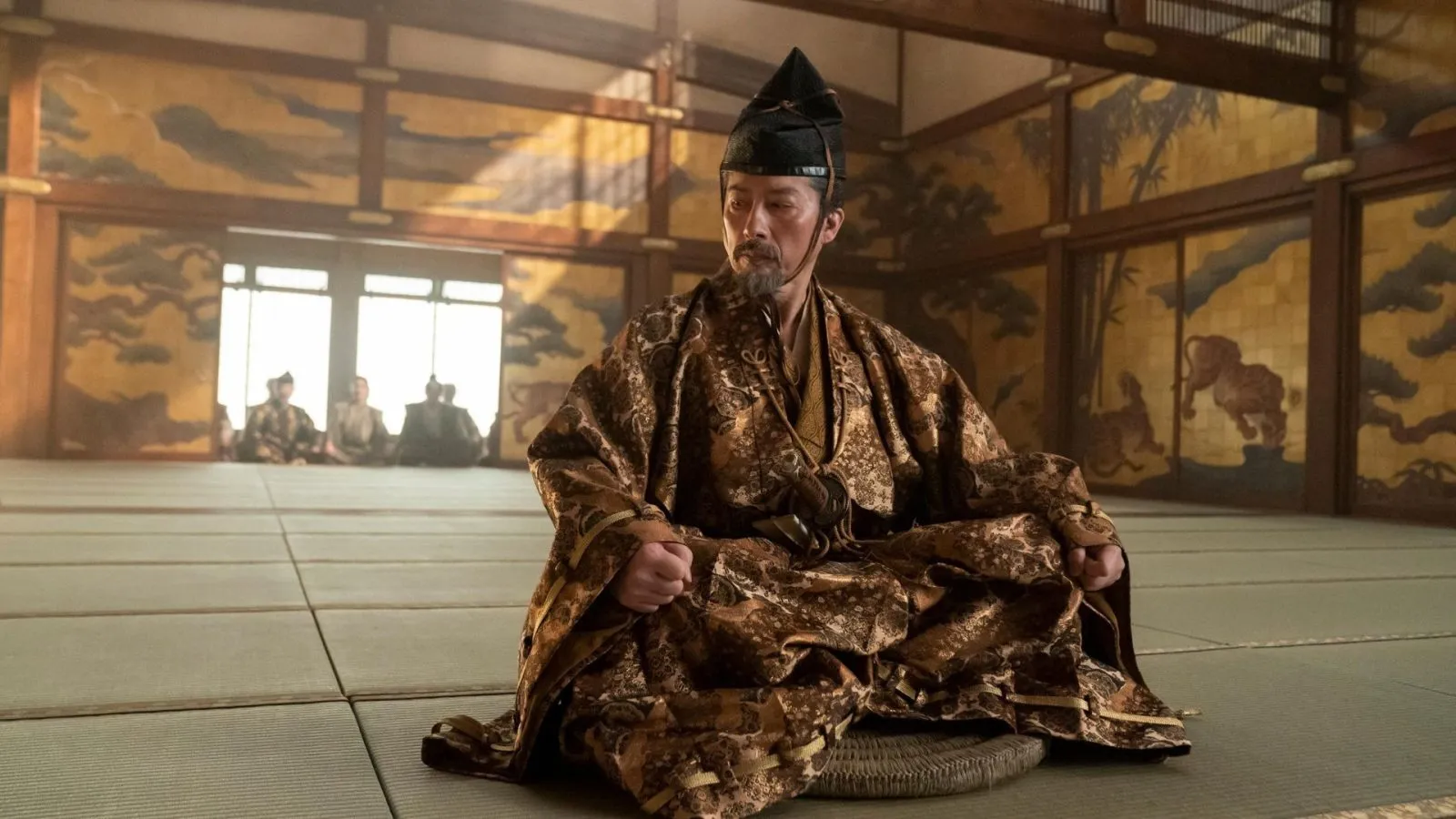
In short, the Eiroku Incident can be described as the following: it is a collection of events that began with the assassination of Ashikaga Yoshiteru and ended with Ashikaga Yoshiaki’s installment as shōgun. It is a complicated time in Sengoku history, mainly due to the power vacuum that was created after the death of Yoshiteru that resulted in the absence of an Ashikaga shōgun for three years. The breakdown of the incident is as follows: the assassination of Yoshiteru, the burning of Tōdaiji, and Oda Nobunaga’s march on Kyōto. The incident is named after the era it took place.
The Inciting Incident: The Death of Yoshiteru

The Eiroku Incident begins with the death of the 13th Ashikaga shōgun, Yoshiteru. Much like the Honnōji Incident, the true motives of his assassins are unknown, but there are multiple theories as to why the Matsunaga and Miyoshi clans decided to overthrow the shōgun.
Up until 1564, Ashikaga Yoshiteru had been under the thumb of the Miyoshi clan, who had not only chased him out of the capital but brought him back after calling a truce in 1558. It was not the friendliest of relationships, and it was obvious that both clans used each other to further their own power. Yet, the Miyoshi found themselves struggling during this time. From 1561 to 1564, Miyoshi Nagayoshi lost his three brothers and his heir, which led to a gradual decline of his physical and mental health. This caused his senior retainer, Matsunaga Hisahide, to become the most powerful man in the Miyoshi clan, going so far as to proclaim himself the governor of Yamato Province (1). Once Miyoshi Nagayoshi died in August 1564, the only people that stood in Hisahide’s way within the Miyoshi were the men known as the Miyoshi Triumvirate, or the Miyoshi Three: Miyoshi Nagayasu, Miyoshi Masayasu and Iwanari Tomomichi.
While the Miyoshi seemed to decay from the inside, Ashikaga Yoshiteru seemed to find some success in mediating in conflicts between clans all over Japan. His range went as far north as the Date clan in Mutsu and as far south as the Shimazu in Satsuma (2). Not all was relatively peaceful. In 1562, the Mōri clan decided to attack the Amago clan, both who he had tried to mediate peace between. In the midst of the campaign, Mōri Motonari’s eldest son, Takamoto, died unexpectedly. Theories rose, especially considering the time frame and the clan’s resistance to peace with the Amago, claiming that Takamoto was poisoned by the shogunate (3). This same theory has also been used with the death of the Miyoshi heir, Yoshioki, and even Nagayoshi to a lesser extent. Those that support this theory point to the friendly relationship the Ashikaga had with the missionaries and managed to get a hold of poison from overseas to use in these cases. Interestingly, in the case of Nagayoshi, the theory states that he was treated for his declining mental and physical health with new medicines containing opium and coca leaves, which unfortunately only led to further decline (4). As interesting a theory this is, no primary sources have been able to support these claims.
The most common theory, even written by Sengoku era historian, Ōta Gyūichi, was that Yoshiteru was looking for a way to be rid of the Miyoshi after the passing of Nagayoshi. He probably thought that with Nagayoshi gone, he would be able to regain the power of the bakufu and thus becoming a shōgun with real power once again. Yoshiteru failed to consider Matsunaga Hisahide’s position within the clan, along with the Miyoshi Three, all four of whom were using the heir of the clan, Miyoshi Yoshitsugu, as a puppet to gain more power for themselves. Despite their distrust of one another, the Miyoshi Three and Matsunaga Hisahide worked together to eliminate the shōgun. It was no big secret either.
Over the course of several years, Yoshiteru reinforced the defenses at Nijō Castle by erecting mounts and digging moats on all sides of the palace. They had almost completed renovations of gates and fences by the time Yoshiteru met his end. According to the famous Sengoku Jesuit, Luís Fróis, Yoshiteru knew that he was about to be attacked, for he initially fled the capital the day before, but after his senior officials showed a willingness to go down fighting, Yoshiteru returned and prepared to meet the Matsunaga and Miyoshi clans head-on (5).
On June 17, 1565, the Miyoshi Three, Miyoshi Yoshitsugu, and Matsunaga Hisamichi assembled an army of 10,000 at Kiyomizu Temple under the guise of worship (6). At around 8 AM, the Miyoshi and Matsunaga forces surrounded the palace on all sides and began their attack on Yoshiteru (7). Like Honnōji years later, the details of the battle are a bit hazy. Many have claimed that Matsunaga Hisahide was present at this attack, however he was in Yamato Province at the time (8). The Ashikaga put up a decent fight, but a large majority of Yoshiteru’s retainers perished or committed seppuku by the time the assault was over. Even his squire, Odachidono, was said to have fought as valiantly as his lord, dying by his own hand after witnessing Yoshiteru’s death (9). The man known as the “Sword Shōgun” was dead by noon (10).
The death of Yoshiteru shocked and struck fear into the heart of his supporters, so much so that they stayed away from his funeral that was held only by a few monks in Shokokuji in the northern part of Kyōto (11). While the information is somewhat conflicting, it is also worth noting that his mother and wife (some say consort instead), were also killed during this assault on the palace (12). Immediately after, they turned and killed Yoshiteru’s younger brother, Ashikaga Shūkō, who was the head priest of the Rokuon Temple and imprisoned his other younger brother, Kakukei (later Yoshiaki) on the grounds of Kōfuku Temple in Nara (13). It was after this that problems began to arise between the Miyoshi and Matsunaga clans.
History Repeats: The Burning of Tōdaiji

The alliance between the Matsunaga and the Miyoshi was fragile at best. It did not take long for things to deteriorate between the two clans. The Miyoshi Three began working to get Yoshiteru’s cousin, Ashikaga Yoshihide, as the next shōgun. Yet, after the death of one of the Three (Miyoshi Nagayasu), the remaining men came into conflict with Matsunaga Hisahide, leading to a falling out of the two clans (14). Adding to the animosity was the escape of Ashikaga Yoshiaki from Kōfuku Temple, with the assistance of Hosokawa Fujitaka (15). Considering that Kōfuku Temple was in Hisahide’s domain, the Miyoshi blamed him for Yoshiaki’s escape. Incredibly, these allegations would come to backfire on the remaining members of the Miyoshi Three, for this caused the heir of the Miyoshi, Yoshitsugu, to come into conflict with the Miyoshi Three. This resulted in a plan to eliminate the Miyoshi Three, while they were trying to eliminate Matsunaga Hisahide.
In 1566, the Miyoshi Three, along with another old enemy of Matsunaga’s, Tsutsui Junkei, invaded Yamato and began laying siege to Tamon Castle, the Matsunaga headquarters. A couple of problems came with this. First, Tamon Castle was impregnable. Second, the Matsunaga soldiers were in high spirits. This led to the battle turning into a two-year long stalemate, with a few clashes between the clans periodically (16).
Another layer of complexity was added when Miyoshi Yoshitsugu joined Matsunaga Hisahide. During the initial siege of Tamon Castle, Yoshitsugu was detained by the Miyoshi Three. He managed to escape in the spring of 1567 and made amends with Hisahide. This led to an all-out counter-offensive by the Miyoshi/Tsutsui alliance, with the Tsutsui setting up camp on a mountain behind the Daijō monastery of the Kōfuku Temple in the summer of 1567. After a while, they came down from the mountain and settled in Tōdaiji, near the Great Hall, and began laying siege to Tamon Castle from there. It is at this point that the significant destruction of the surrounding temples via fire attacks took place (17).
Since the Tsutsui’s move to Tōdaiji, both sides set fires to various places as they attacked each other. This included some sub-buildings of Tōdaiji, Kōfuku Temple and Hannya Temple. By the autumn months, Kaiden-in, the Buddhist ordination platform of Tōdaiji, was burned to the ground and the Matsunaga army set-up its base on the charred remains. The last time Tōdaiji became the base camp for both armies was in the Nara Period (710-740 AD), and it would soon lead to its destruction (18).
On November 10, 1567, Matsunaga Hisahide ordered an all-out attack on the Miyoshi/Tsutsui alliance, whose amies were positioned near the Great Hall of Tōdaiji. At around midnight, return fire from the Miyoshi ignited the Great Hall, and soon, the grounds of the temple became a battlefield. The Miyoshi/Tsutsui alliance would eventually retreat, but the clashes between these armies would not stop until Oda Nobunaga marched into Kyōto with Ashikaga Yoshiaki in October 1568 (19).
Though the destruction of Tōdaiji was minimal compared to the destruction in sustained under Taira no Shigehira during the Genpei War (1180-1185), it was still seen as an act of villainy, one that has been attributed to Matsunaga Hisahide to this very day. The structures that survived the assault include the Nigatsudo, Hokkedo, the Shōsōin, Nandaimon (large south gate), Shoro (bell tower), Tengaimon (another gate) and the Nenbutsudo (invocation hall). While these survived, because the armies fought in and around the Great Hall, it took most of the damage. The Great Hall itself burned and even the great statue of the Buddha that sat inside took direct hits, so much so that the head of the statue fell a day later. Due to a lack of funds, the Great Hall and the Buddha sat in ruins for over 120 years (20).
Will the Next Shōgun Please Stand Up?

While the Miyoshi and the Matsunaga clans began to fight in and around the capital, Ashikaga Yoshiaki was on the run. After escaping Kōfuku Temple, he sought shelter from the Rokkaku clan first. This did not work out, for it turned out that the Rokkaku were in league with the Miyoshi and tried to assassinate him. From there, he turned to Takeda Yoshimune of Wakasa Province, who kept him in the lurch for some time only to tell him that there was nothing he could do either. Finally, Yoshiaki headed off to Echizen and demanded sanctuary with the Asakura clan. Asakura Yoshikage was not pleased with the idea, mainly because he posed a threat to his own clan and did everything in his power to get him to leave, going so far as to place him in modest accommodations for the duration of his stay. It seemed that Yoshiaki wanted out of Echizen as well, but after reaching out to the Uesugi, Takeda and Mōri clans and receiving no reply, it seemed that Echizen would have to become home for a while (21).
In the meantime, Ashikaga Yoshihide was unable to march onto the capital, for his supporters, the Miyoshi, were too preoccupied with the Matsunaga clan to take him to Kyōto and make him shōgun. Yet, that was not the only hangup Yoshihide was facing. Since he was backed by those who assassinated Yoshiteru, officials of the bakufu opposed the idea of his appointment. While Yoshiaki seemed to be the one the officials wanted, even he was struggling to find a way to get to the capital. The Asakura were dealing with the Ikko-ikki at the time (22). The title was wide open for both of them but did not have the means to get there to claim it.
Finally, the Imperial Court had enough. Someone had to become shōgun. They required a donation of 10,000 hiki (100 kan) of money for the appointment of shōgun, and surprisingly, Yoshihide was the first to comply. He managed to reduce the amount needed to half and proclaimed himself shōgun in Tonda in Settsu Province in the spring of 1568. The problem was he had to get to Kyōto and the situation was still treacherous, so he postponed his march (23). This left an opening for Yoshiaki.
Around this time, Hosokawa Fujitaka began looking for a way to get Yoshiaki out of Echizen. He reached out to a former retainer of Asakura Yoshikage’s who had fallen out of favor with him: Akechi Mitsuhide. He asked the former retainer which of the current daimyō would help Yoshiaki reach the capital, and without hesitation, he suggested Oda Nobunaga. After Mitsuhide met with Nobunaga, the warlord from Owari agreed to support Yoshiaki. He made Mitsuhide one of his retainers and gave him a fief in Mino. Yoshiaki left the Asakura behind in July 1568, escorted by Mitsuhide’s men and as soon as he crossed the border, he was greeted by Nobunaga personally. Yoshiaki was even given accommodations at Risshoji Temple until the march on the capital began (24).
On October 19, 1568, Oda Nobunaga entered Kyōto with Ashikaga Yoshiaki (25). Nobunaga managed to expel the Miyoshi Three out of the capital, while Matsunaga Hisahide and Miyoshi Yoshitsugu surrendered. Ashikaga Yoshihide, fled back to Tonda, dying almost immediately after due to illness. The following month, Yoshiaki was approved as the shōgun of the Ashikaga clan, concluding the Eiroku Incident (26).
Aftermath
While Yoshiaki’s appointment to shōgun seemed to cool off the infighting between the Miyoshi and Matsunaga clans, other problems arose almost as quickly as they ended. Yoshiaki wanted those involved with his brother’s assassination and those associated with Yoshihide to be punished. Animosity toward Nobunaga began to build when he welcomed Hisahide and Yoshitsugu as allies, going so far as marrying the younger sister of Yoshiaki to Yoshitsugu (27). Others scattered across Japan, but issues arose when Konoe Sakihisa (the kampaku) and Takakura Nagasō (a state councilor), took refuge at Ishiyama Honganji. The Konoe clan were important, especially considering the close relationship to the Ashikaga family via marriage, and originally sided with Yoshiaki after his escape in Nara. Their position changed, however, and the Konoe began reconciling with the Miyoshi Three. This caused two other members of the bakufu, Kujō Tanemichi and Nijō Haruyoshi, to switch their support to Yoshiaki. Konoe was banished and sided with those at Ishiyama Honganji, eventually leading to the siege of the monastery fortress (28).
It was after these events that the relationship between Nobunaga and Yoshiaki fell apart completely. He began to reach out to clans in the region to take on Nobunaga, but after the death of Takeda Shingen in May 1573, those plans fell apart. By August 1573, Nobunaga ran Yoshiaki out of the capital, which essentially ended the Ashikaga Shogunate, however, he did not give up his title until 1588 (29).
Sources
- “Eiroku Incident”, Japanese Wiki Corpus. https://www.japanesewiki.com/history/Eiroku%20Incident.html, last accessed 6/17/2023
- “Ashikaga Yoshiteru”, Wikipeida.org (Japan). Ashikaga Yoshiteru – Wikipedia, last accessed 6/17/2023
- “Eiroku Incident”, SengokuJidai.org via WayBack Machine. Article printed on 5/14/2023
- “Eiroku Incident”, SengokuJidai.org via WayBack Machine. Article printed on 5/14/2023
- “Eiroku Incident”, SengokuJidai.org via WayBack Machine. Article printed on 5/14/2023
- Ōta, Gyūichi. The Chronicle of Lord Nobunaga (2012), p. 116
- “Eiroku Incident”, Japanese Wiki Corpus. https://www.japanesewiki.com/history/Eiroku%20Incident.html, last accessed 6/17/2023
- “Eiroku Incident”, SengokuJidai.org via WakBack Machine. Article printed on 5/14/2023
- Chaplin, Danny. Sengoku Jidai: Nobunaga, Hideyoshi and Ieyasu: Three Unifiers of Japan (2018), p. 137
- “Eiroku Incident”, Japanese Wiki Corpus. https://www.japanesewiki.com/history/Eiroku%20Incident.html, last accessed 6/17/2023
- Chaplin, Danny. Sengoku Jidai: Nobunaga, Hideyoshi and Ieyasu: Three Unifiers of Japan (2018), p. 137
- All but one source makes this distinction. The archived article from SengokuJidai.org, retrieved using the WayBack Machine, states the following: “Yoshiteru’s formal wife (the daughter of Konoe Taneie) was sent to the Konoe home, but Yoshiteru’s cherished consort, Kojijū (the daughter of Shinji Haruie) was killed.” Article printed 5/14/2023
- “Eiroku Incident”, SengokuJidai.org via WayBack Machine. Article printed on 5/14/2023
- “Eiroku Incident”, SengokuJidai.org via WayBack Machine. Article printed on 5/14/2023
- “Eiroku Incident”, Japanese Wiki Corpus. https://www.japanesewiki.com/history/Eiroku%20Incident.html, last accessed 6/17/2023
- “Eiroku Incident”, Japanese Wiki Corpus. https://www.japanesewiki.com/history/Eiroku%20Incident.html, last accessed 6/17/2023
- “Eiroku Incident”, Japanese Wiki Corpus. https://www.japanesewiki.com/history/Eiroku%20Incident.html, last accessed 6/17/2023
- “Eiroku Incident”, Japanese Wiki Corpus. https://www.japanesewiki.com/history/Eiroku%20Incident.html, last accessed 6/17/2023
- “Eiroku Incident”, SengokuJidai.org via WayBack Machine. Article printed on 5/14/2023
- “Eiroku Incident”, Japanese Wiki Corpus. https://www.japanesewiki.com/history/Eiroku%20Incident.html, last accessed 6/17/2023
- Chaplin, Danny. Sengoku Jidai: Nobunaga, Hideyoshi and Ieyasu: Three Unifiers of Japan (2018), pp. 137-138.
- “Eiroku Incident”, SengokuJidai.org via WayBack Machine. Article printed 5/14/2023
- “Eiroku Incident”, Japanese Wiki Corpus. https://www.japanesewiki.com/history/Eiroku%20Incident.html, last accessed 6/17/2023
- Chaplin, Danny. Sengoku Jidai: Nobunaga, Hideyoshi and Ieyasu: Three Unifiers of Japan (2018), pp. 138-139.
- Chaplin, Danny. Sengoku Jidai: Nobunaga, Hideyoshi and Ieyasu: Three Unifiers of Japan (2018), p. 141.
- “Eiroku Incident”, SengokuJidai.org via WayBack Machine. Article printed 5/14/2023
- “Miyoshi Yoshitsugu”, Japanese Wiki Corpus. https://www.japanesewiki.com/person/Yoshitsugu%20MIYOSHI.html, last accessed 6/17/2023
- “Eiroku Incident”, SengokuJidai.org via WayBack Machine. Article printed 5/14/2023
- “Ashikaga Yoshiaki”, Wikipedia.org. https://en.wikipedia.org/wiki/Ashikaga_Yoshiaki, last accessed 6/17/2023




